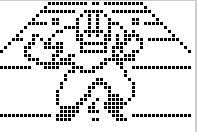Ahead of recording episode 125 of the DreamPod, which first aired as part of RadioSEGA’s illustrious Winterfest and is now available in all the regular places, we appealed to our listener base to send us their festive Dreamcast-related ideas, memories and musings. And thankfully, in generous Christmas spirit, our mailbag promptly filled-up with a hefty slab of responses ranging from the witty, to the heart-warming, to the downright impressive. Quite a few were discussed on the pod, but many are undoubtedly worth sharing on the blog too, and so here we are.
Thanks to all the wonderful Junkard-ers (yardies?) who made submissions, tuned into the podcast or are currently reading these hungover scribblings of mine. The Junkyard wouldn't be what it is without you and we are blessed to have such a wonderful community gathered around the site eighteen years on from its founding.
So, if you'd like to amplify your festive cheer, pour yourself a glass of Creamcast ale, and read on.
 |
| Our guest on DreamPod 125, Pat from Sega Saturn, SHIRO!, lovingly embracing the Dreamcast that Santa brought him as a child. |
Christmas Cracker Extravaganza
In typical parochial British fashion, I had assumed that Christmas Crackers were a widespread phenomenon, when in fact, it turns out they are pretty much contained to the shores of the UK. Nevertheless, we had some fantastic responses from all over the world to our call for Dreamcast-themed Christmas cracker ideas, several sent in by folks who had no prior familiarity with the concept (but evidently got with the programme quite rapidly).
Horror host extraordinaire Uncle Clutch knocked it out of the park, delivering a set of eight sublime watercolour paintings. Feast your eyes on their magnificence below, and, if you ever happen to meet the dude in person, be sure to buy him a drink (or three) on us.
 |
| Copyright Uncle Clutch, 2023. Not to be reproduced without permission of the creator. |
 |
| Copyright Uncle Clutch, 2023. Not to be reproduced without permission of the creator. |
Drum and Bass superstar Pizza Hotline delivered a detailed pitch for some garish Hello Kitty crackers: “A mixture of pink and blue semi-transparent non-recyclable plastic Hello Kitty crackers, like the consoles. There’s confetti inside that consists of mini plastic hello kitty faces and Dreamcast swirls which gets everywhere, sticks to your carpet and clothing, and no matter how much you brush or hoover it, it won’t come off. The prizes in the crackers are any of the capsule toys from Shenmue 1 or 2. You might get a poorly formed Sonic or Virtua Fighter character, or, better yet some dice or a mini forklift. It’s a Christmas miracle! When you pull each cracker, they don’t go BANG. Instead, they make the annoying VMU beeeep sound, and, instead of jokes you get awful one-liners from Shenmue. However, if you’re lucky you might get the odd inappropriate line from Blue Stinger’s Dogs Bower too. ‘Years ago I was Chinese’, ‘Try asking Chinese people about Chinese’, ‘Ugly like the worst sin’, or perhaps ‘Our jackets are too cool for that scum. I want guys like you to wear them’”.
Of course, we assume that the emphasis on plastic-heavy construction is in fact a tongue-in-cheek throwback to the excesses of the late '90s and not something for David Attenborough to be worried about.
 |
| The Hello Kitty Dreamcast has certainly become a bit of a style icon in recent years. |
Bobby (purveyor of the magnificent Wandering Through Shenmue YouTube channel) provided an equally detailed pitch for some crackers that we would love to see on our tables – and gets top marks for including a bad joke: “I believe the cracker itself should be in the shape of a VMU. They could even come in different colours seeing as we had so many to pick from when the Dreamcast was originally released. To open it, you put your fingers where the finger grip traditionally is and pull the protective dust cap right off. In addition, the VMU screen will have traditional Sega images that are slightly altered. Sonic wearing a Christmas hat. Amy with mistletoe above her head. Nozomi wearing a scarf.
All of the hats will bear the traditional Dreamcast swirl logo. I suppose if the cracker is released in Great Britain the swirl will be blue, whereas if it's released in Japan or North America, it will be the traditional orange. But what's inside? How about some rubber erasers in the shape of different character heads from Sega franchises. One of them could have Skies of Arcadia characters. Another one would have Sonic characters of course. Maybe the other would have Virtua Fighter characters.”
And how about that bad cracker joke? Make sure you are seated for this one folks.
“Q: What do you tell your friend when the laser on your Dreamcast is having a hard time reading a disc because it's dirty?
A: It's thinking”











































